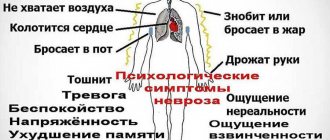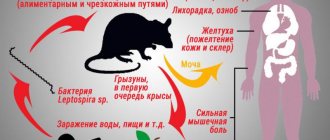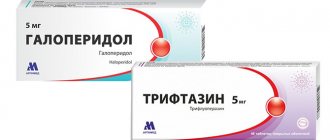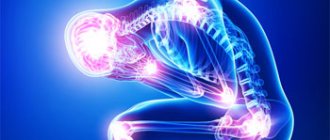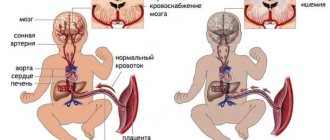Acetylcholine is a neurotransmitter that is responsible for wakefulness and sleep. In addition, connectivity plays a vital role in the learning and memory state of a person. It is considered the first discovered neurotransmitter that is responsible for neuromuscular transmission. The world first learned about this neurohormone in 1914 thanks to the work of Henry Dale. Subsequently, Otto Lowy from Australia continued to study the compound. The scientists' work was awarded the Nobel Prize in 1936.
Acetylcholine has the following effects on the human body:
- ensuring communication between different areas of the central nervous system;
- stimulation of the ability to concentrate and a successful learning process;
- increasing natural adaptation to stress;
- providing a positive effect on cognitive processes;
- slowing down neurodegenerative changes.
It is worth noting that the connection plays a big role for a calm and measured life, as it allows you to avoid impulsive decisions and mistakes. Acetylcholine is also widely known as a “memory molecule”, which helps a person to correctly and quickly absorb information and concentrate on time. Additionally, the compound has been shown to promote good mood. It can increase the plasticity of the brain, which helps a person remain mentally stable throughout his life. Acetylcholine deficiency can cause a number of diseases:
- Alzheimer's disease;
- myasthenia gravis;
- Parkinson's disease;
- multiple sclerosis;
- dementia.
The first signs of deficits are the loss of objects and the inability to keep track of other people's current activities.
Acetylcholine in foods and drugs
According to research, the precursor of this compound is choline bitartrate. According to statistics, 90% receive insufficient amounts of the substance from food. It is found in the following products:
- beef;
- egg yolk;
- seafood;
- foods that contain lecithin.
Medicines that affect the synthesis of acetylcholine are called cholinergic. Popular and effective supplements include:
- Alpha GPC is a form that penetrates the brain easily and quickly. This natural compound, which is necessary for the body to function properly, is an important component of breast milk. In the US, the supplement is sold as a drug to improve memory quality.
- DMAE or dimethlaminoethanol - helps increase the compound, but does not improve cognitive function.
- Citicoline was invented to treat angina, but over time it began to be used as a remedy for cognitive impairment. It has a stimulating effect on the growth of new neurons, improves memory and attention.
Remember that the supplement can only be prescribed by a qualified physician, taking into account the current state of the body. Uncontrolled use of drugs can cause serious disturbances in the functioning of the nervous system.
How is acetylcholine formed?
Acetylcholine (C7H16NO2) is an ester of acetic acid (CH3COOH) and choline (C5H14NO+), which is formed by choline acetyltransferase. Choline is delivered to the central nervous system along with the blood, from where it is transferred to nerve cells through active transport.
Acetylcholine can be stored in synaptic vesicles. This neurotransmitter, due to depolarization of the cell membrane (electronegativity reduces the electrical potential of the cell membrane), is released into the synaptic space.
Acetylcholine is degraded in the central nervous system by enzymes with hydrolytic properties, the so-called cholinesterases. Catabolism (a general reaction leading to the degradation of complex chemical compounds into simpler molecules) of acetylcholine, this is associated with acetylcholinesterase (AChE, an enzyme that breaks down acetylcholine to choline and acetic acid residue) and butyrylcholinesterase (BuChE, an enzyme that catalyzes the reaction of acetylcholine + H2O → choline + carboxylic acid anion), which are responsible for the hydrolysis reaction (a double exchange reaction that takes place between water and a substance dissolved in it) in neuromuscular junctions. This is the result of the action of acetylcholinesterase and butyrylcholinesterase - reabsorbed in nerve cells as a result of the active functioning of the choline transporter.
Acetylcholine and serotonin levels
Please note that increased levels of acetylcholine can lead to the opposite effect. There are a number of symptoms of this situation:
- difficulty concentrating;
- chronic fatigue;
- irritability;
- problems with sleep and wakefulness;
- muscle spasms, convulsions and sudden cessation of breathing;
- headaches and malaise;
- anxiety.
This is due to the antagonistic relationship between acetylcholine and serotonin. When one indicator increases, the level of another sharply decreases, which leads to additional health problems. Low serotonin in combination with increased acetylcholine causes anxiety, impulsivity and irritability. A long-term condition can become the basis for depression. Antidepressants that help reduce acetylcholine can be used for treatment. But at the same time, the levels of norepinephrine and dopamine decrease. With long-term use, an increased level of serotonin is observed, which is another type of depressive condition.
Acetylcholine is an important compound for the normal functioning of the body. The main rule is normal indicators. Otherwise, additional problems arise that can lead to depression.
Medicine
Peripheral muscarinic-like action (muscarine is the one in the fly agaric) of acetylcholine :
– slow heart rate
– spasm of accommodation
-lowering blood pressure
– dilation of peripheral blood vessels
– contraction of the muscles of the bronchi, gall and bladder, uterus
– increased peristalsis of the stomach, intestines,
– increased secretion of the digestive, sweat, bronchial, lacrimal glands, miosis.
Constriction of the pupil is associated with a decrease in intraocular pressure.
Acetylcholine plays an important role as a mediator of the central nervous system (transmission of impulses in parts of the brain; small concentrations facilitate, and large concentrations inhibit, synaptic transmission).
Changes in acetylcholine metabolism can lead to impaired brain function. The deficiency largely determines the picture of the disease - Alzheimer's disease.
Some centrally acting acetylcholine are psychotropic drugs. acetylcholine antagonists can have a hallucinogenic effect.
Information on the chemical synthesis of acetylcholine
Acetylcholine
Acetylcholinum (
Acetylcholini)
2-(Acetyloxy)-N,N,N-trimethylethanaminium chloride
Acetylcholine, 2-acetoxy-N,N,N-trimethylethyl ammonium chloride, is easily synthesized using a variety of methods. For example, 2-chloroethanol reacts with trimethylamine and the resulting N,N,N-trimethylethyl-2-ethanolamine hydrochloride, also called choline, is acetylated with acetic acid andrigide or acetyl chloride, resulting in acetylcholine.
The second method of synthesis is as follows: trimethylamine reacts with ethylene oxide, which, when reacted with hydrogen chloride, is converted into hydrochloride, which, in turn, is acetylated as described above. Acetylcholine can also be obtained by reacting 2-chloroethanol acetate and trimethylamine.
Acetylcholine is a choline molecule acetylated at the oxygen atom. Due to the fact that acetylcholine is highly polar, charged with an ammonium group, it does not permeate lipid membranes, and therefore, when administered externally, it remains in the extracellular space and does not pass through the blood-brain barrier. Acetylcholine is not suitable for therapeutic purposes when administered intravenously, since it can quickly and in various ways deactivate cholinesterase. Moreover, a collapsed state, a drop in blood pressure and cardiac arrest may occur. On the other hand, acetylcholine can be used in the form of eye drops to constrict the pupil during cataract surgery, and the post-operative period is also easier.
Negative effects of acetylcholine
Depression
The relationship between smoking and depression has been reported in many studies. In chronic smokers, acetylcholine (nicotinic) receptors are increased rather than decreased, as is often the case with chronic substance use. An increase in these receptors contributes to the association between depression and smoking [].
Based on animal models, too much activation of certain acetylcholine receptors (nicotinic receptors alpha4beta2 or alpha7) may contribute to depression [,].
Acetylcholine
International name of the medicinal substance:
Acetylcholine The list of drugs containing the active substance Acetylcholine is given after the description.
Pharmacological action:
Quaternary ammonium compound;
in the body, under the influence of acetylcholinesterase and serum cholinesterase, it is easily destroyed to form choline and acetic acid. It is a mediator of nervous excitation in m- and n-cholinergic synapses; in high concentrations it causes persistent depolarization in the area of synapses and blocks the transmission of excitation. Takes part in the transmission of nervous excitation to the central nervous system in different parts of the brain: in small concentrations it facilitates synaptic transmission, in large concentrations it inhibits. It is not widely used as a drug; when taken orally, it is ineffective, because hydrolyzes quickly; when administered parenterally, it has a quick, sharp, but short-lived effect. After application into the conjunctival sac, it is absorbed into the blood and has a resorptive effect. Pharmacokinetics:
Absorption is low, poorly penetrates the BBB.
Indications:
Surgeries on the anterior chamber of the eye (cataract removal, keratoplasty, iridectomy) - to ensure miosis within a few seconds after releasing the lens;
spasm of peripheral arteries: endarteritis, “intermittent” claudication, trophic disorders; spasm of the retinal arteries; intestinal atony, bladder atony; X-ray diagnosis of esophageal achalasia. Contraindications:
Hypersensitivity, bronchial asthma, stage II-III CHF, angina pectoris, gastrointestinal bleeding, epilepsy, hyperkinesis during pregnancy, inflammatory processes in the abdominal cavity before surgery. With caution.
Pregnancy, lactation period. Side effects:
Allergic reactions, narrowing of coronary vessels, decreased blood pressure, bradycardia, arrhythmias, facial skin flushing, difficulty breathing, increased sweating, miosis, diarrhea, increased intestinal motility.
When applied to the eyes: swelling, clouding of the cornea. Overdose. Symptoms: bradycardia, profuse sweat, hallucinations, collapse, miosis, bronchospasm, cardiac arrest. Treatment: intravenously or subcutaneously, 1 ml of 0.1% atropine solution, for severe bronchospasm and a sharp decrease in blood pressure - 0.1-1 ml of 0.1% epinephrine solution subcutaneously. Interaction:
Beta-blockers, anticholinesterase drugs and alpha-agonists increase the antiglaucoma effect.
Reduce parasympathetic activity: tricyclic antidepressants, m-anticholinergics, phenothiazines, chlorprothixene, clozapine. Fluoratan increases side effects; when combined with quinidine, ventricular flutter may develop. Special instructions:
During the injection, you must make sure that the needle does not enter a vein (IV administration is not allowed due to the possibility of a sharp decrease in blood pressure and cardiac arrest).
The solution is prepared immediately before use, the ampoule is opened and the required amount (2-5 ml) of sterile water for injection is injected into it with a syringe. When boiled and stored for a long time, the solutions decompose. Long-term application (over several years) into the conjunctival sac can lead to irreversible miosis and the formation of posterior petechiae. To prolong the miotic effect, preliminary instillation of pilocarpine is possible. During cataract surgery, it is used only after the lens has been isolated. Preparations containing the active substance Acetylcholine:
Acetylcholine chloride
The information provided in this section is intended for medical and pharmaceutical professionals and should not be used for self-medication. The information is provided for informational purposes only and cannot be considered official.
Mediator of memory and learning
The acetylcholine system of the brain is directly related to the phenomenon of synaptic plasticity - the ability of a synapse to increase or decrease the release of a neurotransmitter in response to an increase or decrease in its activity. Synaptic plasticity is an important process for memory and learning, so scientists sought to find it in the part of the brain responsible for these functions - the hippocampus. A large number of acetylcholine neurons send their processes to the hippocampus, and there they influence the release of neurotransmitters from other nerve cells [8]. The method for carrying out this process is quite simple: various nicotinic receptors (mainly α7 and β2 types) are located on the body of the neuron and its presynaptic part. Their activation will lead to the fact that the passage of the signal through the innervated cell will be simplified, and it will be more likely to pass on to the next neuron. The greatest influence of this kind is experienced by GABAergic neurons—nerve cells whose neurotransmitter is γ-aminobutyric acid [9].
GABAergic neurons are an important part of the system that generates electrical rhythms in our brain. These rhythms can be recorded and studied using an electroencephalogram, a widely available research method in neurophysiology. Rhythms of different frequencies are designated by Greek letters: 8–14 Hz is the alpha rhythm, 14–30 Hz is the beta rhythm, and so on. The use of acetylcholine receptor stimulants causes theta (0.4–14 Hz) and gamma (30–80 Hz) rhythms to appear in the brain. These rhythms typically accompany active cognitive activity. Stimulation of postsynaptic muscarinic acetylcholine receptors located on neurons of the hippocampus (memory center) and prefrontal cortex (center of complex behaviors) leads to the excitation of these cells and the generation of the rhythms mentioned above. They accompany various cognitive activities, for example, building a temporal sequence of events [10].
The hippocampus and prefrontal cortex play an important role in learning. From the point of view of reflexes, any learning occurs in two ways. Let's say you are an experimenter, and the object of your experiment is a mouse. In the first case, the light in its cage turns on (the conditioned stimulus), and the rodent receives a piece of cheese (the unconditioned stimulus) before the light goes out. The emerging reflex can be called delayed. In the second case, the light also turns on, but the mouse receives the treat some time after the light turns off. This type of reflex is called trace. Reflexes of the second type depend on the awareness of stimuli more than reflexes of the first type. Suppression of the activity of the acetylcholinergic system leads to the fact that animals do not develop trace reflexes, although no problems arise with delayed ones [11].
When comparing the secretion of acetylcholine in the brain of rats that developed both types of reflexes, interesting data were obtained [12]. Rats that successfully mastered the temporal relationship between a conditioned and an unconditioned stimulus showed a significant increase in acetylcholine levels in the medial prefrontal cortex (Fig. 5) compared to the hippocampus. The difference in acetylcholine levels was especially significant in rats that had developed the trace reflex. Those rodents that failed both tasks showed approximately equal levels of the neurotransmitter in the brain regions studied (Fig. 6). Based on this, we can conclude that the prefrontal cortex plays a major role in learning itself, and the hippocampus stores acquired knowledge.
Figure 5. Acetylcholine release in the hippocampus (HPC) and prefrontal cortex (PFC) of rats during successful reflex acquisition. The maximum level of acetylcholine is observed in the prefrontal cortex during the development of the trace reflex. Figure from [12].
Figure 6. Acetylcholine release in the hippocampus (HPC) and prefrontal cortex (PFC) of rats after learning failure. Almost the same acetylcholine content is recorded in the two zones, regardless of the reflex. Figure from [12].
Medicine for memory
If normally the acetylcholinergic system of our brain is responsible for memory, attention and learning, then diseases in which this type of transmission in our brain is disrupted should be manifested by corresponding symptoms: memory loss, decreased attention and the ability to learn new things. Here we must immediately make a reservation that during normal aging, the vast majority of people experience a decrease in both the ability to remember new things and mental alertness in general. If these impairments are so severe that they interfere with the older person's ability to carry out daily activities and meet their daily needs (caring for themselves), then doctors may suspect dementia. If you want to learn more about dementia, I recommend starting with the WHO fact sheet on dementia [19].
Strictly speaking, dementia is not a separate disease, but a syndrome that occurs in a number of diseases. One of the most common diseases that leads to dementia is Alzheimer's disease. It is believed that in Alzheimer's disease, a pathological protein β-amyloid accumulates in nerve cells [20, 21], which disrupts the activity of nerve cells, which ultimately leads to their death. In addition to this theory, there are a number of others that have their own evidence. It is likely that in Alzheimer's disease, different processes occur in the brain cells of different patients, but they lead to similar symptoms. However, β-amyloid is interesting because it can suppress the effect produced by acetylcholine on the cell through nicotinic receptors [22]. If we can intensify acetylcholinergic transmission, then we can reduce the manifestations of the disease and prolong the independent life of a person with dementia.
Drugs used for dementia include inhibitors of acetylcholinesterase (AChE), an enzyme that breaks down acetylcholine in the synaptic cleft. The use of AChE inhibitors leads to an increase in the content of acetylcholine in the interneuronal space and improved signal transmission. A study of the effectiveness of AChE inhibitors in Alzheimer's disease determined that they can reduce the symptoms of the disease [23] and slow its progression [24]. The three most commonly used drugs in this group—rivastigmine, galantamine, and donepezil—are comparable in efficacy and safety. There is also a small but successful experience with the use of AChE inhibitors in the treatment of musical hallucinations in older people [25].
With the help of acetylcholine, our brain learns and focuses attention on different objects and phenomena of the surrounding world. Our memory “works” on acetylcholine, and its deficiency can be compensated with the help of medications. I hope you enjoyed your introduction to acetylcholine.
source
Electrical stimulation
Dihydro-β-erythroidine blocks nicotinic receptors in the brain and nerve ganglia when they exhibit a cholinergic response. They also have a high affinity for tritium-labeled nicotine. Sensitive neuronal αBGT receptors in the hippocampus are characterized by low acetylcholine responsiveness, in contrast to insensitive αBGT elements. The reversible and selective competitive antagonist of the former is methyllycaconitine.
Certain anabesiin derivatives provoke a selective activation effect on the group of αBGT receptors. The conductivity of their ion channel is quite high. These receptors have unique voltage-dependent characteristics. Whole-cell current with the participation of depolarization quantities el. potential indicates a decrease in the passage of ions through the channels.
This phenomenon is regulated by the content of Mg2 elements in the solution. This distinguishes this group from muscle cell receptors. The latter do not undergo any changes in the ion current when adjusting the membrane potential values. At the same time, the N-methyl-D-aspartate receptor, which is relatively permeable to Ca2 elements, shows the opposite picture. When the potential increases to hyperpolarizing values and the content of Mg2 ions increases, the ion current is blocked.


